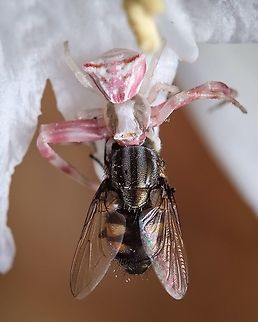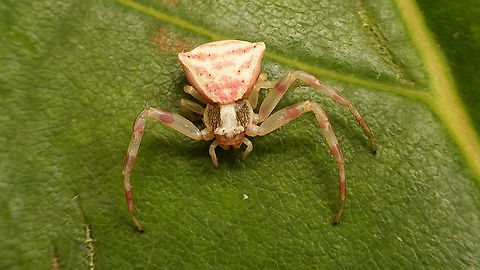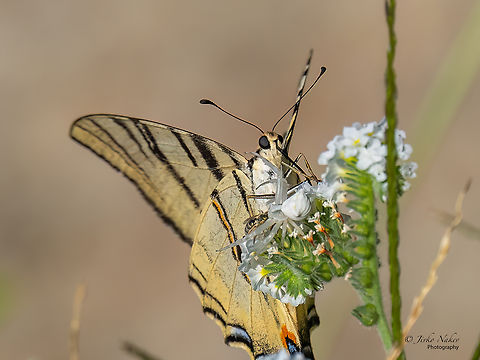
Appearance
This species shows an extreme sexual dimorphism both in size and coloration, also in comparison with other crab spiders. The adult males reach a body length of only 2–4 millimetres, while females are 7–10 millimetres long. This species is characterized by the prominent rear corners of the opisthosoma.In males the basic colour of the prosoma varies from yellow brown to dark brown, the opisthosoma may be yellow and green or brown. Also females are very variable in colour, their basic colour can be white, yellow or pink.
As a matter of fact these crab-spiders hide themselves adapting the colour of their body to the colour of the flowers on which they are waiting for preys, a behaviour that conceal them from predators and from the pollinating preys.

Distribution
It has a Palearctic distribution from Great Britain and Portugal in the West to Japan in the East. It is present in most countries of Europe, but it is absent in Iceland, Ireland, Norway, Denmark and Finland. North-south distribution extends from Sweden to South Africa and from Siberia to Central Java, including temperate and tropical ecozone.
Habitat
These spiders prefer warm temperatures, forest-free areas, dry and sandy habitats with high solar radiation and dry grasslands.References:
Some text fragments are auto parsed from Wikipedia.